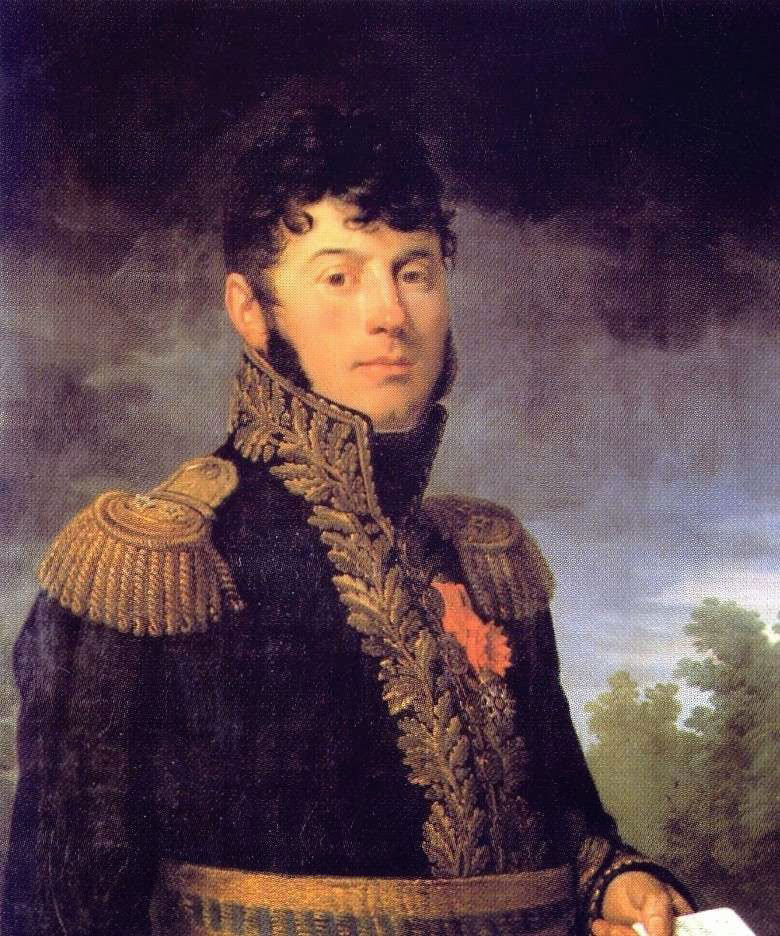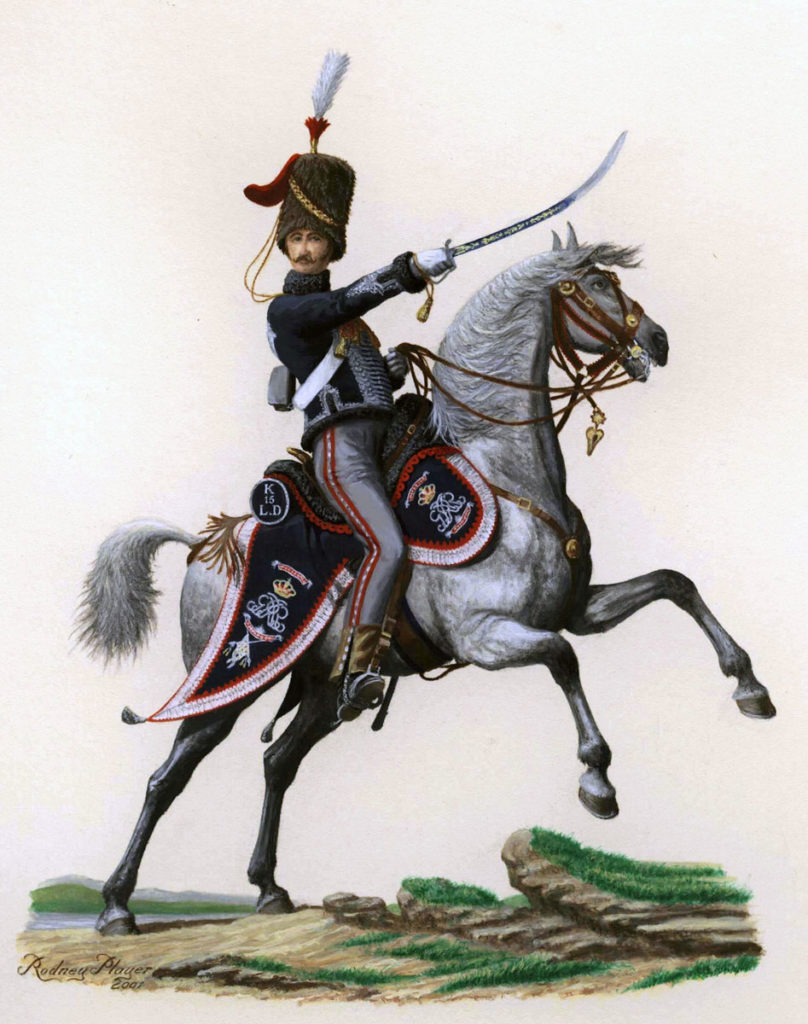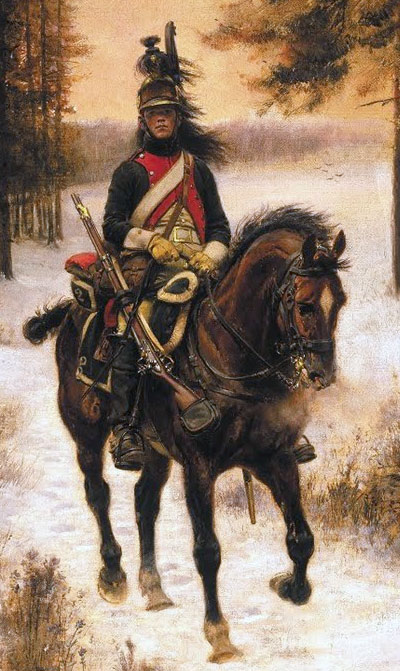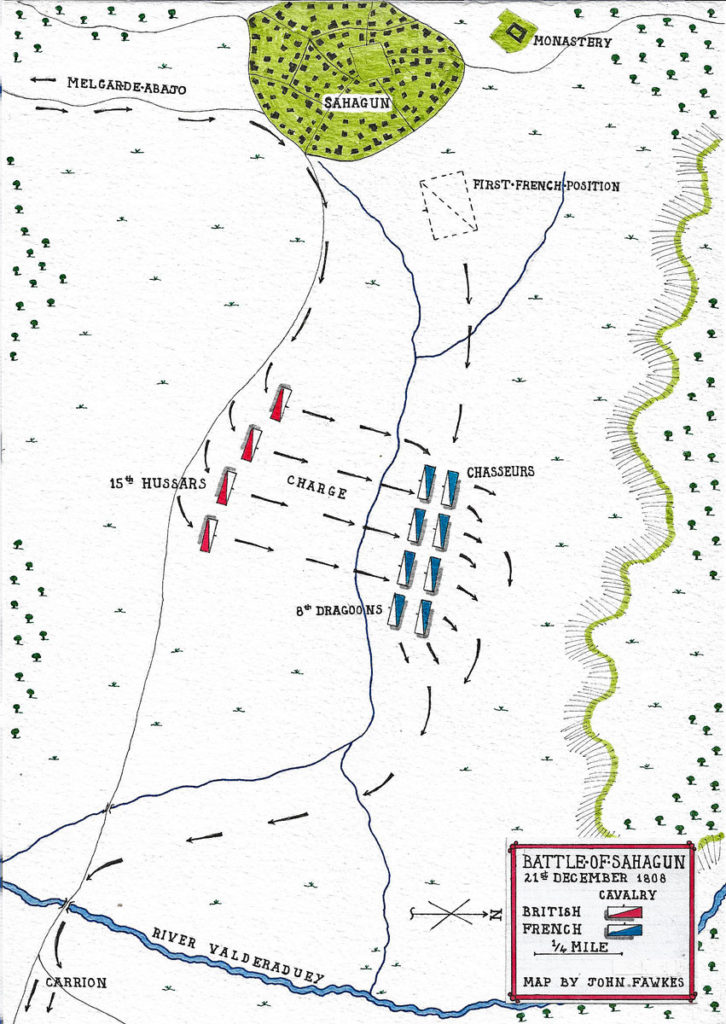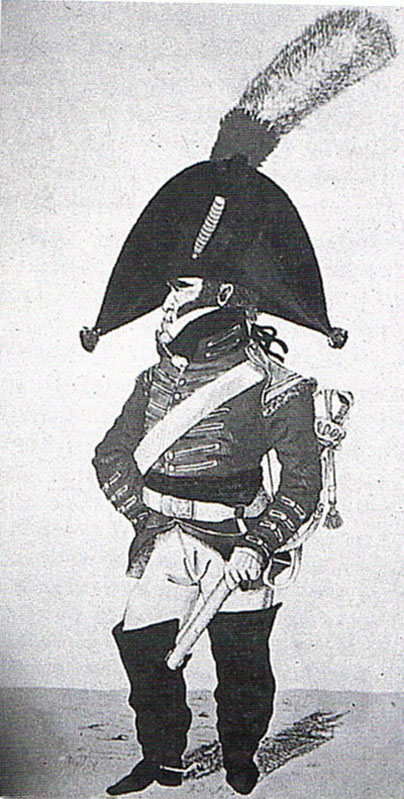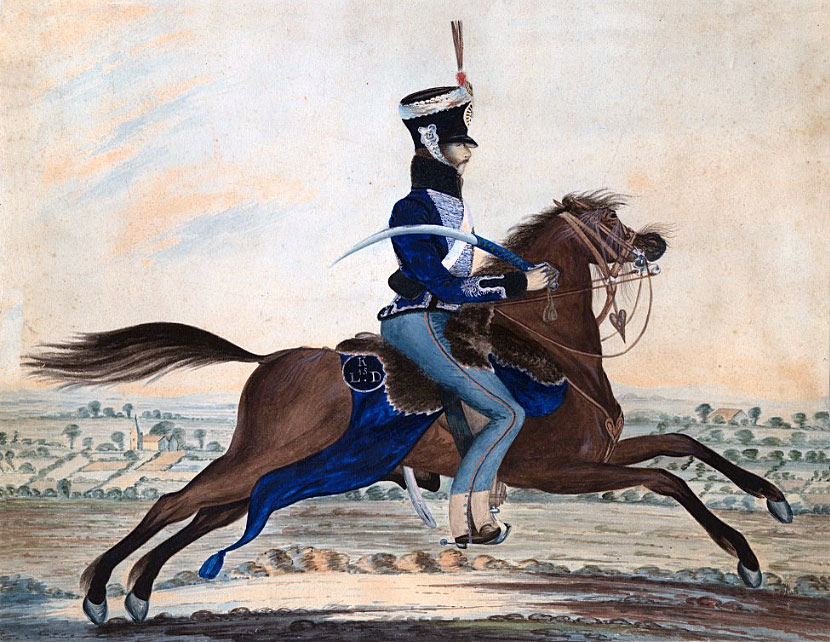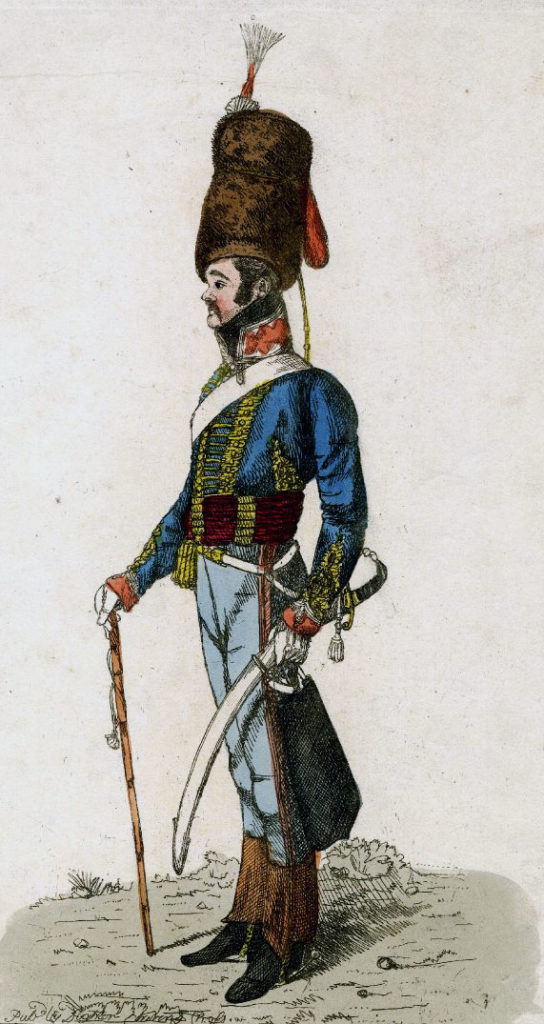The dawn attack in the snow by the British 15th Hussars, on 21st December 1808, routing a French cavalry brigade and setting the standard for British cavalry in the Peninsular War; ‘Success to the Fifteenth; and ‘God Save the King’
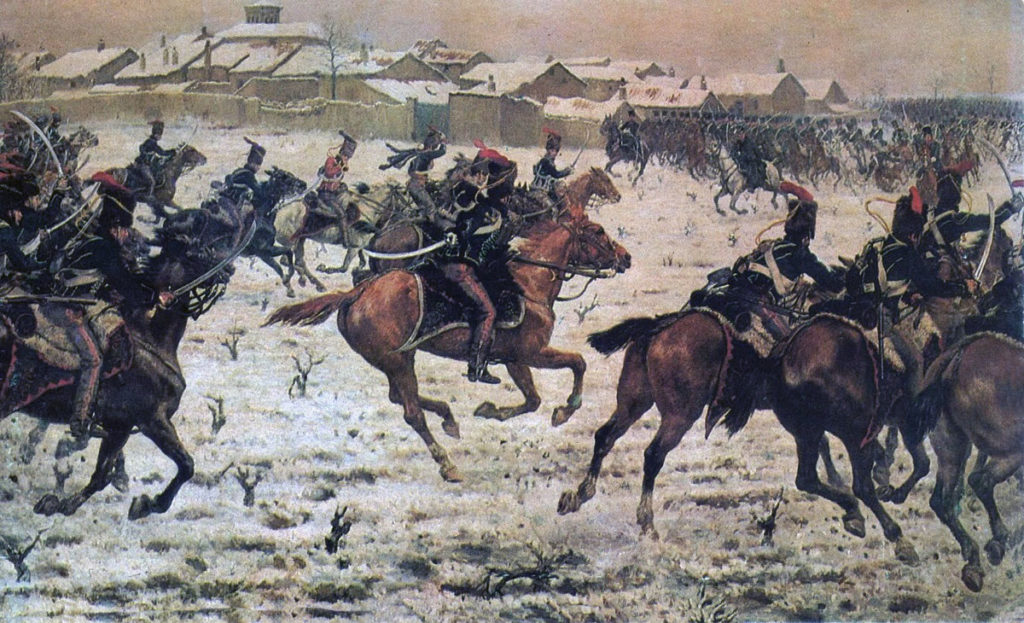
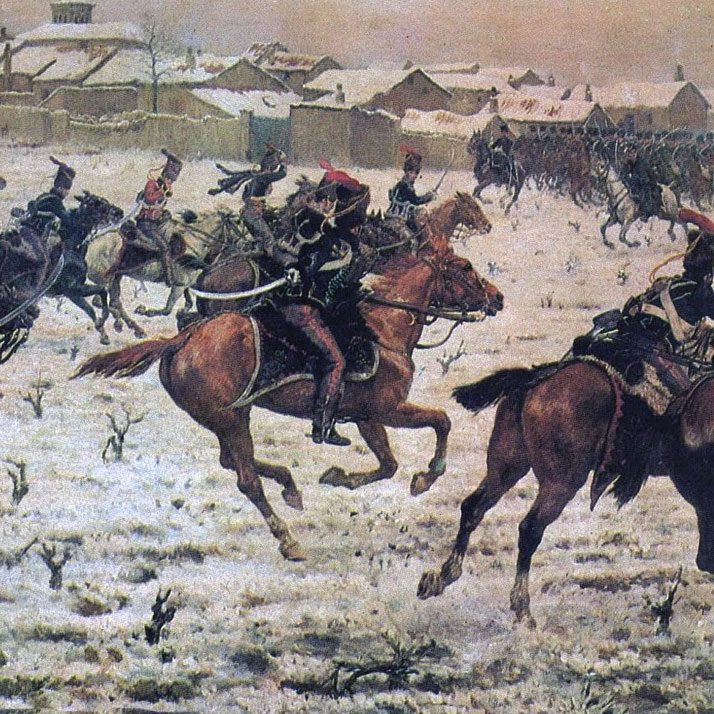
4. Podcast of the Battle of Sahagun: The dawn attack by the British 15th Hussars, on 21st December 1808 in the snow, that routed a French cavalry brigade and set the standard for British cavalry in the Peninsular War; ‘Success to the Fifteenth; and ‘God Save the King’: John Mackenzie’s Britishbattles.com podcast
The previous battle of the Peninsular War is the Battle of Vimeiro
The next battle of the Peninsular War is the Battle of Benavente
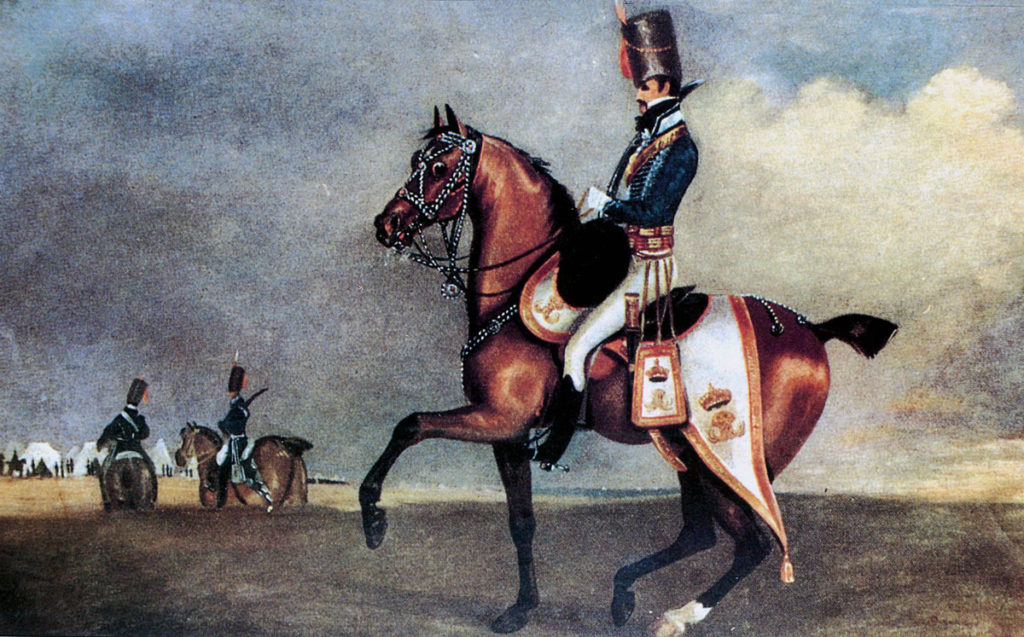
War: Peninsular War
Date of the Battle of Sahagun: 21st December 1808
Place of the Battle of Sahagun: North-western Spain.
Combatants at the Battle of Sahagun: The British 15th Hussars of Slade’s Brigade with the general’s escort of an officer and 10 soldiers from the 7th Hussars, supported by the 10th Hussars and a troop of 4 Royal Horse Artillery guns against the French Cavalry Brigade of General Debelle.
Commanders at the Battle of Sahagun: Major-General Lord Henry Paget led Slade’s Brigade.
General Debelle led his French cavalry brigade in the battle.
Size of the armies at the Battle of Sahagun:
There is controversy over the numbers of troops involved in the Battle of Sahagun.
Gordon, who took part in the battle as a captain in the 15th Hussars, says there were between 300 and 400 men of his regiment in the battle, some 100 men being left behind at Melgar de Abajo, presumably as the horses or men were not up to a rigorous night march.
Gordon sets the French force as numbering about 800. This figure was taken from information in General Debelle’s captured papers, presumably routine duty returns for the two regiments, rather than a head count for the battle.
Fortescue says the 15th Hussars took the field with ‘at least 500 sabres’, whereas Debelle ‘had not at most above 450’.
On the other hand, more than 140 French cavalrymen were captured, while a significant proportion escaped.
It would be a reasonable assessment of the numbers to say that there were 350 men of the 15th Hussars and 700 men of Debelle’s Brigade in the battle.
Winner of the Battle of Sahagun:
The charge by the 15th Hussars overwhelmed Debelle’s brigade and dispersed it, with many French cavalrymen captured in the battle and the pursuit.
Orders of Battle:
Brigadier General Slade’s Brigade: 10th and 15th Light Dragoons (Hussars) with 4 guns of the Royal Horse Artillery.
General Debelle’s Brigade: 8th Dragoons and 1st Provisional Chasseurs à Cheval.
Background to the Battle of Sahagun:
In October 1808, Sir John Moore took over command of the British army in Portugal from Sir Harry Burrard, one of the two generals pilloried for entering into the Convention of Cintra, by which the British Royal Navy conveyed Marshal Victor’s French army, defeated at the Battle of Vimeiro by Sir Arthur Wellesley (later the Duke of Wellington), to French ports.
As Moore prepared to march his army through Portugal to reach Spain, a British force arrived by sea at Corunna, commanded by Sir David Baird.
The plan was for Moore and Baird to join forces in a single British army at Salamanca in central Spain.
On 11th November 1808, Moore’s force marched from Ciudad Rodrigo on the western Spanish border, arriving at Salamanca on 13th November 1808, where he learnt that the French had taken Burgos.
On 14th November 1808, came the news that the French had reached Valladolid, their advance endangering the prospect of Moore’s and Baird’s forces combining.
On 28th November 1808, Moore received news of the heavy defeat of the Spanish General Castaños at the Battle of Tudela.
This left the British, in total numbering around 40,000 men, to face alone the advancing French.
Moore immediately issued orders for his army to fall back to Lisbon and for Baird to retreat to Corunna.
Before he could begin his withdrawal to Portugal, Moore had to wait to be joined by General Hope’s division.
On 4th December 1808, Hope reached Salamanca after some gruelling marches, complete with Moore’s artillery, which had been unable to accompany the main army due to the bad state of the roads.
Moore own force now comprised some 22,000 men.
On 3rd December 1808, in the face of information that the Emperor Napoleon was concentrating his efforts on capturing Madrid and that the Spanish capital, preparing to resist the French, could not, in all conscience, be left unsupported, Moore cancelled his plans to retreat to Portugal.
On 5th and 6th December 1808, Moore sent orders to Baird to halt his retreat to Corunna and return to Astorga and then Benavante.
Moore’s intention was to unite the two British armies in Spain at Valladolid.
On 11th December 1808, sections of Moore’s army marched to Toro, where they met up with Lord Paget with Baird’s cavalry.
Stewart’s cavalry brigade covered the right flank, moving to Nava del Rey.
On the night of 12th December 1808, acting on information from Spanish locals, a squadron of the 18th Hussars surrounded Rueda and surprised a party of French cavalry, killing 18 and capturing 35 troopers.
Moore’s intention was now to move towards Burgos and threaten the lines of communication of the Emperor Napoleon’s army threatening Madrid.
Moore’s understanding from the various misleading communications received from Spanish and British sources was that the French army in the north of Spain numbered around 80 to 90,000 men.
On 13th December 1808, Moore moved his headquarters to Alaejos, on the road between Salamanca and Tordesillas.
On 14th December 1808, Moore received an intercepted despatch from Marshal Berthier to Marshal Soult.
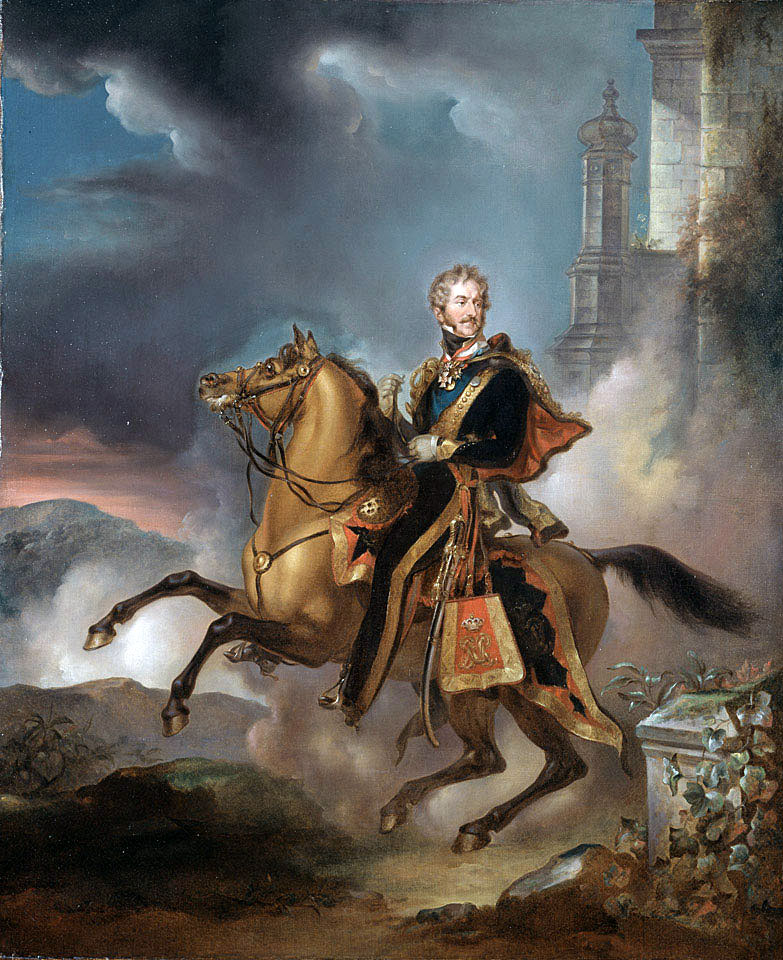

Podcast of the Battle of Sahagun: The dawn attack by the British 15th Hussars, on 21st December 1808 in the snow, that routed a French cavalry brigade and set the standard for British cavalry in the Peninsular War; ‘Success to the Fifteenth; and ‘God Save the King’: John Mackenzie’s Britishbattles.com podcast on the battle.
Berthier’s despatch contained information on the various French formations, showing that their strength was significantly greater than Moore had been led to believe. Berthier stated that Moore was thought to be retreating to Lisbon and was no longer in Spain. Soult was instructed to take Leon, Zamora and Benavente.
Moore ordered Baird to march to Benavente and redirected his own troops towards Toro, with a view to joining Baird as soon as possible.
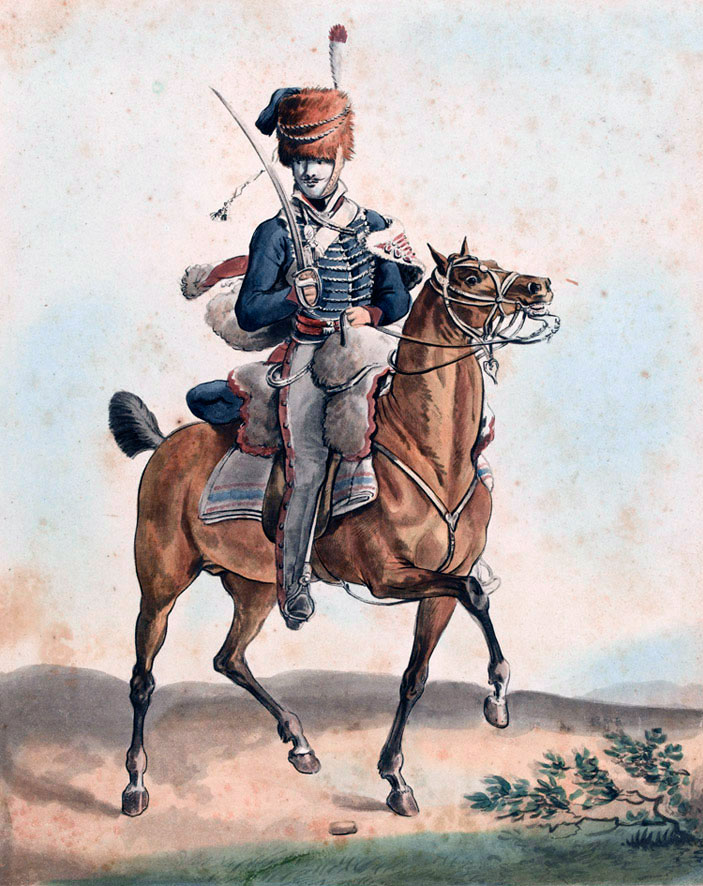
Moore’s plan was now to attack the isolated corps of Marshal Soult on the River Carrion, his strength being half the British.
Clashes between cavalry patrols revealed Moore’s intentions to the French, causing Franceschi’s cavalry brigade to withdraw from Valladolid to Medina de Rio Seco, 20 miles to the north-west.
Moore crossed the Douro, moving north and Baird marched north-east, the two forces for the first time forming a combined army at Mayorga on 20th December 1808.
During this advance, the British cavalry was in almost constant action against French picquets.
A squadron of the 18th Light Dragoons (Hussars) raided Valladolid and captured the Spanish Intendant, a French placeman and a substantial quantity of money.
A captured French cavalry officer, Major Antignac, revealed that the French army was very large and included the Imperial Guard, information not previously known to Moore.
It was also revealed to Moore that far from proposing to resist to the utmost, the Spanish authorities were negotiating with the Emperor Napoleon to surrender Madrid.
Once the British army was united, it comprised some 26,000 men.
Marshal Soult was in the dark as to Moore’s actions, due to the effectiveness of the British cavalry screen. Soult still expected the British armies to combine at Valladolid and ordered his two infantry divisions to concentrate at Carrion and Saldaña on the River Carrion.
In the meantime, Soult wrote to Marshal Junot calling for reinforcements to enable him to attack the British.
Battle of Sahagun:
Moore’s army advanced south to cross the River Cea at Mayorga.
Slade’s cavalry brigade, accompanied by Lord Paget, commanding the Cavalry Division, after crossing the Cea, turned along the river road to the north-east, making for Melgar de Abajo.
Somewhere along the route Paget received information from the local Spanish population that there was a French cavalry brigade in Sahagun, where it had been lodged in the monastery for some two weeks.
This was the brigade of General Debelle, comprising the 8th Dragoons and the 1st Provisional Chasseurs à Cheval.
Lord Paget resolved to march on with Slade’s Brigade of the 10th Hussars, the 15th Hussars, a troop of 4 Royal Horse Artillery guns and his escort from his own regiment, the 7th Hussars and attack the French cavalry brigade in Sahagun.
Paget’s plan was that, on reaching Sahagun, the 15th Hussars were to form up to the east of the town and block the retreat of the French cavalry, while the 10th Hussars with the horse artillery guns attacked the monastery in Sahagun, where the French were reported to be billeted.
The distance from Mayorga to Sahagun was some 15 miles.
It was dark when Paget’s cavalry left Melgar de Abajo.
The conditions were atrocious. It was snowing heavily and the narrow road was frozen, rutted and treacherous. Several cavalry horses slipped and fell during the ride. Soon after the British cavalry left Melgar de Abajo, the snow stopped and gave way to lightning.
On the march to Sahagun, the British cavalry column had to pass in single file along two long causeways, narrow and without side rails, where the road crossed the River Cea and back again.
As the 15th Hussars approached Sahagun they encountered a strong French picquet, which the British promptly charged. Many of the French cavalrymen were cut down or captured, but several got away and were able to give warning of the approach of the British hussars.
The 15th Hussars reached Sahagun just before dawn and took a route around the town to the main Carrion road.
As they reached the main road, the 15th Hussars saw a dark block of French cavalry drawn up on the far side of the road. It was the French cavalry brigade formed and ready for battle.
The French cavalry brigade turned to its left and headed away towards the east.
The 15th Hussars followed the road, riding parallel with the French brigade, but overtaking it.
The French regiments halted and turned towards the road, opening fire from the saddle with their carbines.
The 15th Hussars promptly formed line to their left and charged the French cavalry.
Covering the intervening 400 yards of rough ground, cut by ditches, the 15th Hussars crashed into the stationery French cavalry brigade, overthrowing men and horses and cutting their way right through the French formation.
The battle broke up into a number of individual combats, but very quickly the two French regiments turned away and galloped headlong towards the east, the Dragoons appearing to take the north-east road towards Saldaña, while the Chasseurs continued along the eastern road towards Carrion.
It took the 15th Hussars time to re-organise after the confusion of the charge in the darkness and set off in pursuit.
A body of Frenchmen got away, while others were overtaken and captured.
On returning to Sahagun, the 15th Hussars found a further body of cavalry drawn up and prepared for action. These troops were soon identified as the British 10th Hussars.
Over the following days, British infantry occupied the surrounding villages and found many wounded French cavalrymen from Debelle’s Brigade, who were taken prisoner.
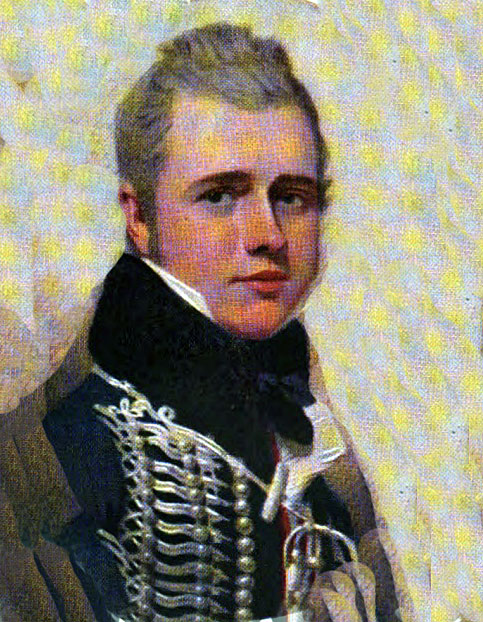
A graphic account of the Battle of Sahagun is to be found in Captain Alexander Gordon‘s ‘A Journal of a Cavalry Officer in the Corunna Campaign 1808-1809’. Gordon was a captain in the 15th Hussars at the Battle of Sahagun.
Gordon has the French 8th Dragoons in the first line with the Chasseurs a Cheval behind them, while Fortescue has the order reversed.
It would seem more likely that the 8th Dragoons, an established regiment with a considerable record, would be in the position of honour at the front.
Gordon gives the time for the charge and consequent melee as 10 minutes, with the pursuit taking place over a mile, with one French regiment getting away and the other overwhelmed with many prisoners.
Fortescue attributes the ability of the French brigade to turn out so quickly, after the warning from the escaped picquets, to the horses being kept in stables, saddled, with the riders sleeping nearby.
As it was, the British captured the French brigade’s baggage, with General Debelle’s confidential papers.
The French committed the classic error for cavalry of receiving a mounted charge at the halt. This was their undoing.
Gordon describes how, at the beginning of the battle, the 15th rode along the Carrion high road parallel to the French brigade, on their left, while the French outriders challenged them in French, calling ‘Qui Vive?’ No reply was made to the challenge.
It seems likely that, in spite of the fight with the piquet, the French were unsure of the nationality of the mounted column that appeared out of the darkness, this being a part explanation for their failure to attack.
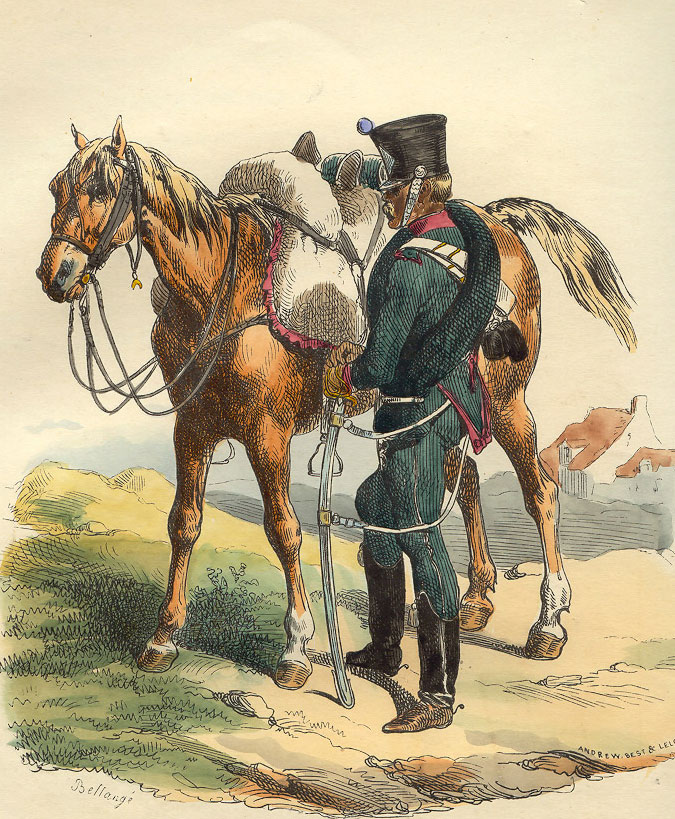
Soult’s other cavalry brigade, commanded by Franceschi, had been billeted at Mayorga and might well have come down the road taken by the British brigade.
Further, hussar uniforms in the two armies were similar and easily confused. Indeed, Gordon desisted from attacking a French officer in the battle, taking his uniform to be British. French Chasseurs a Cheval wore essentially hussar uniforms.
Casualties in the Battle of Sahagun:
French casualties in the Battle of Sahagun were ‘several’ men killed and 12 officers and 145 men taken prisoner, some wounded. Both regimental colonels were captured; Colonel Dud’huit of the 8th Dragoons and Colonel Dugens of the 1st Provisional Chasseurs a Cheval.
British casualties were 2 killed and 18 wounded.
Colonel Greenwood, commanding the 15th Hussars and his adjutant were wounded with sword cuts to the head.
Aftermath to the Battle of Sahagun:
After the battle, British infantry moved into Sahagun, prior to Moore’s advance on Madrid.
Moore then received clear intelligence that the Emperor Napoleon was preparing to move against him with an army significantly larger than his own.
The figure for French troops in Northern Spain was 250,000.
On Christmas Day 1808, Moore began the headlong retreat to Corunna to save his army from destruction.
Battle Honours and Medal for the Battle of Sahagun:
The Military General Service Medal 1848 was issued to all those serving in the British Army present at specified battles during the period 1793 to 1840 and who applied for the medal. The medal was only issued to those entitled to one of the clasps, 11 of which were for battles in the Peninsular War.
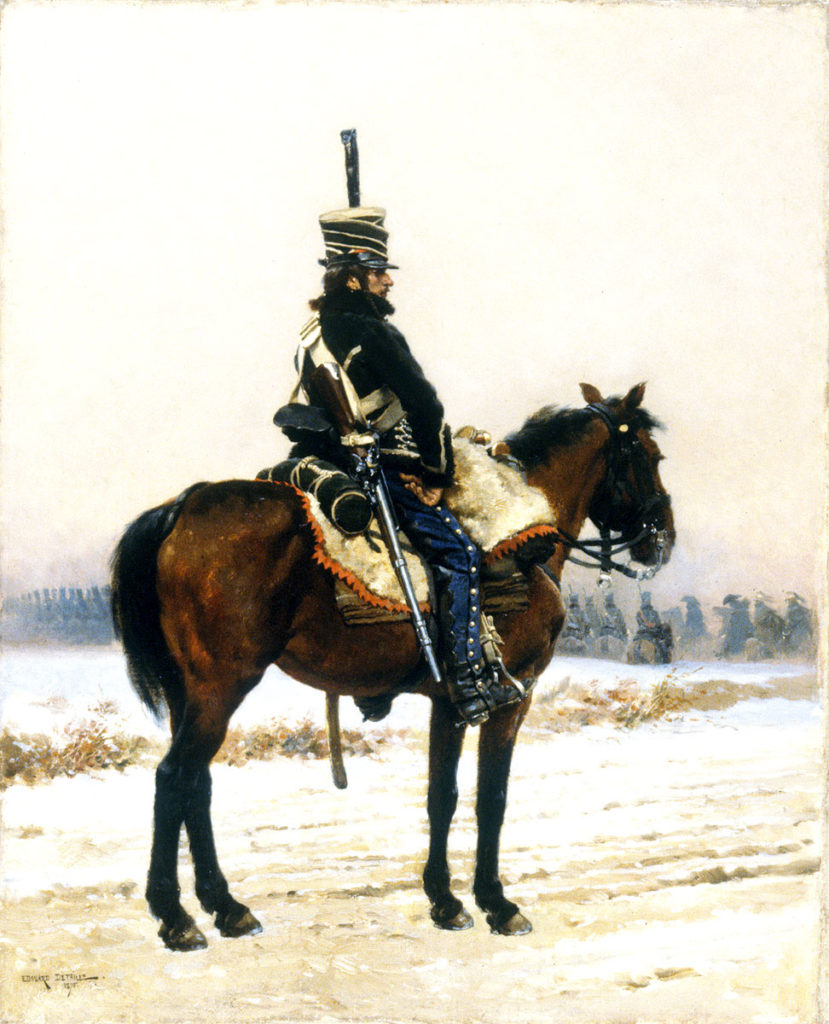
The Battle of Sahagun was one of the clasps, either on its own or in combination with the Battle of Benevente (spelt wrongly), where soldiers were present at both battles.
No regimental battle honour was awarded for the Battle of Sahagun.
Army Gold Medal:
In 1810 a Gold Medal was issued to be awarded to officers of rank of major and above for meritorious service at certain battles in the Peninsular War, with clasps for additional battles. The ‘Large Gold Medal’ was awarded to generals, the ‘Small Gold Medal’ to majors and colonels, with the medal replaced by a cross where four clasps were earned. The Battle of Sahagun was one of the battles, either on its own or in combination with the Battle of Benavente.
Anecdotes and traditions from the Battle of Sahagun:
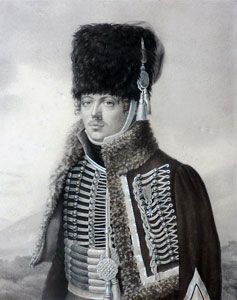
- Gordon states that, after speaking to French prisoners, the 15th understood that the French 8th Dragoons was a ‘favourite corps’, having gained great credit at the Battles of Marengo, Austerlitz, Jena, Eylau, and Friedland, with several of the officers wearing the Cross of the Legion of Honour.
- 1st Provisional Chasseurs à Cheval: the designation ‘Provisional’ was given to a regiment assembled for a particular campaign with troops from a range of regiments and depots. Captain Gordon of the 15th Hussars noted that the regiment contained German soldiers in the French service. Gordon understood from French prisoners that the commander of the Chasseurs à Cheval was Colonel Maurice Tascher, nephew of the Empress Josephine, but that he was not present at the battle. It would seem that Tascher was in Leipzig at the end of December 1808.
- The Battle of Sahagun is a good illustration of the tactical doctrine that cavalry should not receive a mounted charge at the halt. The 15th suffered 3 casualties in the charge, the impetus of which took them through the two French regiments, inflicting dozens of casualties in the impact and driving them off the battlefield in flight.
- Gordon gives the 15th Hussars as shouting ‘Emsdorf and Victory’ as they charged in the Battle of Sahagun. Emsdorf was the battle won by the 15th Light Dragoons, soon after their formation, in the Seven Years War in 1760.
- Gordon describes how one of his troopers managed to shoot his own horse with his pistol during the charge.
- Gordon comments that Colonel Greenwood and the adjutant of his regiment might not have been wounded had the British hussar headdress contained a steel skull cap as did the French hussar headdress.
- Gordon comments that the caution with which the French cavalry treated the British cavalry during the Peninsular War began with the rough handling they received from the 15th Hussars at the Battle of Sahagun.
- General Lord Henry Paget, in spite of his brilliance as a cavalry commander, did not return to the Peninsular with Sir Arthur Wellesley’s army in 1809, due to his elopement with Charlotte, Wellesley’s sister-in-law. Paget served under Wellington at the Battle of Waterloo, losing a leg.
- One of the troopers of the 15th Hussars wrote a song commemorating the battle, first sung on 21st December 1809:
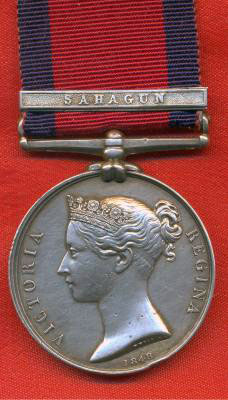
Sahagun (pronounced ‘Sagoon’)
‘Twas in quarters we lay, as you quickly shall hear,
Lord Paget came to us and bade us prepare,
Saying, ‘Saddle your horses-by the light of the moon,
For the French they are lying in the town of Sahagun.’
—
We saddled our horses, and away we did go
O’er rivers of ice and o’er mountains of snow,
To the town of Sahagun then our course we did steer,
‘Twas the Fifteenth Hussars, who had never known fear.
—
We rode on all night till the daylight did break,
When eight of those French on a bridge we did take:
But two got away, and rode off to Sahagun,
To tell the French there that the English had come.
—
The French they turned out of the town of Sahagun,
Well mounted, well armed, full eight hundred strong:
So loud they did cry for Napoleon, their King;
With three cheers from the fifteenth the vineyards did ring.
—
They formed themselves up, and the fight it began,
They thought they could frighten the brave Englishman:
With our glittering broadswords right at them we sped,
They turned threes about, and away they all fled.
—
We soon overtook them as frightened they fled,
Cut through the brass helmets they wore on their head;
‘Have mercy, have mercy! ‘ So loud they did cry;
‘Have mercy, you English, or else we must die!
—
‘Mid the snow in the vineyards the French they lay dead:
Three hundred were taken, the rest of them fled.
Their Colonel, likewise, he was taken in the field;
‘Twas the Fifteenth Hussars made those Frenchmen to yield.
—
The Spaniards turned out of the town of Sahagun
To welcome the Fifteenth, the ‘King’s Light Dragoons,’
With jugs full of wine, our thirst for to quench,
Crying, ‘long live the English, and down with the French!
—
Lord Paget came to us, and thus he did say:
‘I thank you, Fifteenth, for your valour this day;
Dismount now your horses and feed everyone,
For the battle is over and the fight it is won.’
—
The twenty-first of December, my boys, was the day
When three hundred ‘Fifteenth’ made those French run away,
Although they then numbered eight hundred or more.
We’ll drink and well sing now the battle is o’er.
—
Here’s health to Lord Paget, so endeth our stave,
Likewise Colonel Grant, and our Officers brave;
With a full flowing bowl now “we’ll drink and we’ll sing,
‘Success to the Fifteenth; and ‘God Save the King.’
References for the Battle of Sahagun:
See the extensive list of references given at the end of the Peninsular War Index.
The previous battle of the Peninsular War is the Battle of Vimeiro
The next battle of the Peninsular War is the Battle of Benavente
Podcast of the Battle of Sahagun: The dawn attack by the British 15th Hussars, on 21st December 1808 in the snow, that routed a French cavalry brigade and set the standard for British cavalry in the Peninsular War; ‘Success to the Fifteenth; and ‘God Save the King’: John Mackenzie’s Britishbattles.com podcast on the battle.
